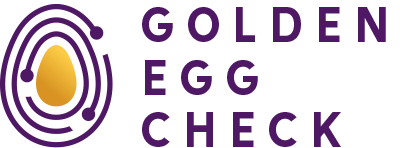A startup runway calculator determines how long your business can survive based on your current cash balance and monthly burn rate. Your runway equals your available cash divided by your monthly expenses. This financial metric helps you make informed decisions about fundraising, spending, and growth strategies before running out of money.
What is startup runway and why does every founder need to track it?
Startup runway is the amount of time your company can operate before running out of cash, measured in months. Unlike other financial metrics that focus on profitability or revenue growth, runway specifically tracks your survival timeline based on current spending patterns and available funds.
Understanding your runway helps you avoid the “valley of death” that many startups face when costs exceed earnings. This period requires careful cash flow management to bridge the gap between initial investment and sustainable revenue generation. Your runway calculation provides the foundation for making strategic decisions about hiring, marketing spend, and product development priorities.
Tracking runway becomes particularly important when market conditions change. During uncertain economic periods, investors often advise startups to extend their runway through either decreased burn rates or additional funding. This metric gives you concrete data to evaluate whether you need to reduce costs, accelerate revenue generation, or begin fundraising efforts.
Your runway also influences investor conversations. Venture capitalists want to see that you understand your financial position and have realistic plans for reaching key milestones before needing additional capital. This demonstrates financial discipline and strategic thinking that investors value when evaluating potential investments.
How do you calculate your startup’s runway accurately?
Calculate your runway by dividing your current cash balance by your monthly burn rate. For example, if you have £240,000 in the bank and spend £20,000 monthly, your runway is 12 months. This basic formula provides your survival timeline at current spending levels.
Include all operating expenses in your burn rate calculation: salaries, rent, software subscriptions, marketing costs, legal fees, and other recurring payments. Don’t forget less obvious expenses like insurance, accounting services, or equipment purchases. Many founders underestimate their true burn rate by overlooking smaller recurring costs that add up significantly.
Avoid these common calculation mistakes. Don’t include one-time expenses or irregular costs in your monthly burn rate, as this skews your runway projection. Similarly, don’t count unpaid invoices or potential revenue as available cash unless payment is guaranteed. Conservative estimates protect you from cash flow surprises.
Update your runway calculation monthly as both cash balance and burn rate change. Your spending typically increases as you hire staff or invest in growth initiatives. Regular updates help you spot trends early and adjust your strategy accordingly. Consider creating best-case and worst-case scenarios to understand your runway range under different circumstances.
What’s the difference between gross burn rate and net burn rate?
Gross burn rate measures your total monthly expenses, while net burn rate subtracts any revenue you generate. If you spend £25,000 monthly with no revenue, both rates are £25,000. If you earn £5,000 monthly, your gross burn remains £25,000 but your net burn drops to £20,000.
Use gross burn rate when planning worst-case scenarios or if your revenue is unpredictable. This metric shows how long you can survive if revenue completely stops, providing a conservative survival estimate. Early-stage startups often focus on gross burn since revenue may be minimal or inconsistent.
Net burn rate becomes more relevant as you generate steady revenue. This metric reflects your actual cash consumption and provides a more optimistic runway calculation. However, only use net burn if your revenue is reliable and recurring. Sporadic or project-based income shouldn’t factor into runway calculations.
Both metrics impact your fundraising timeline differently. Investors want to see gross burn rate to understand your cost structure and efficiency. They also examine net burn rate to evaluate your progress toward sustainability. A decreasing net burn rate indicates improving unit economics and potential path to profitability, which strengthens your investment case.
How long should your startup runway actually be?
Most startups should maintain 12-18 months of runway, with early-stage companies needing longer runways of 18-24 months. This timeframe provides sufficient buffer to reach key milestones, navigate unexpected challenges, and complete fundraising processes without desperation.
Your ideal runway length depends on several factors. Pre-revenue startups typically need longer runways since they’re still validating their business model and finding product-market fit. Companies with proven traction and recurring revenue can operate with shorter runways, as they have more predictable cash flows and easier access to funding.
Consider your fundraising timeline when determining runway needs. Raising investment typically takes 3-6 months from initial investor meetings to closed deals. You want to begin fundraising when you have at least 9-12 months of runway remaining, ensuring you’re not negotiating from a position of financial desperation.
Market conditions also influence optimal runway length. During uncertain economic periods or when venture capital funding becomes scarce, longer runways provide additional security. Some investors specifically advise startups to extend their runway during market downturns, either through reduced spending or additional funding rounds.
What can you do when your runway is getting dangerously short?
When runway drops below six months, immediately implement cost reduction measures and accelerate revenue generation efforts. Cut non-essential expenses first: reduce marketing spend, postpone equipment purchases, and renegotiate supplier contracts. Evaluate every recurring expense for necessity and potential savings.
Personnel costs often represent the largest expense category, making staff reductions a difficult but sometimes necessary option. Before making cuts, consider salary reductions, temporary unpaid leave, or converting salaries to equity arrangements. These alternatives can preserve your team while extending runway during challenging periods.
Accelerate revenue through existing customers rather than seeking new ones, as this typically generates faster results. Offer discounts for annual prepayments, upsell current clients to higher-tier services, or negotiate faster payment terms. These tactics can provide immediate cash flow improvements without requiring new customer acquisition.
Emergency fundraising becomes necessary when other measures aren’t sufficient. Consider raising extension rounds from existing investors, as they already understand your business and can move quickly. Bridge financing or convertible notes often close faster than full equity rounds, providing temporary runway while you pursue larger funding opportunities.
How do you use runway data to make better business decisions?
Use runway calculations to prioritise initiatives that extend survival time while advancing toward key milestones. Every major decision should consider its impact on both burn rate and timeline to critical achievements like product launches, revenue targets, or fundraising goals.
Hiring decisions become more strategic when viewed through runway lens. Calculate how each new employee affects your survival timeline and ensure their contribution justifies the reduced runway. Prioritise hires that directly impact revenue generation or product development over administrative or support roles during cash-constrained periods.
Product development priorities should align with runway constraints. Focus on features that drive customer acquisition or retention rather than nice-to-have improvements. Your runway timeline should influence whether you pursue ambitious new products or concentrate on optimising existing offerings for better market fit.
Communicate runway status transparently with investors and key stakeholders. Regular updates on cash position and burn rate demonstrate financial discipline and help maintain investor confidence. When runway concerns arise, proactive communication allows stakeholders to provide support or guidance before situations become critical. At Golden Egg Check, we help startups navigate these crucial financial decisions and connect with relevant investors when runway extension becomes necessary.




